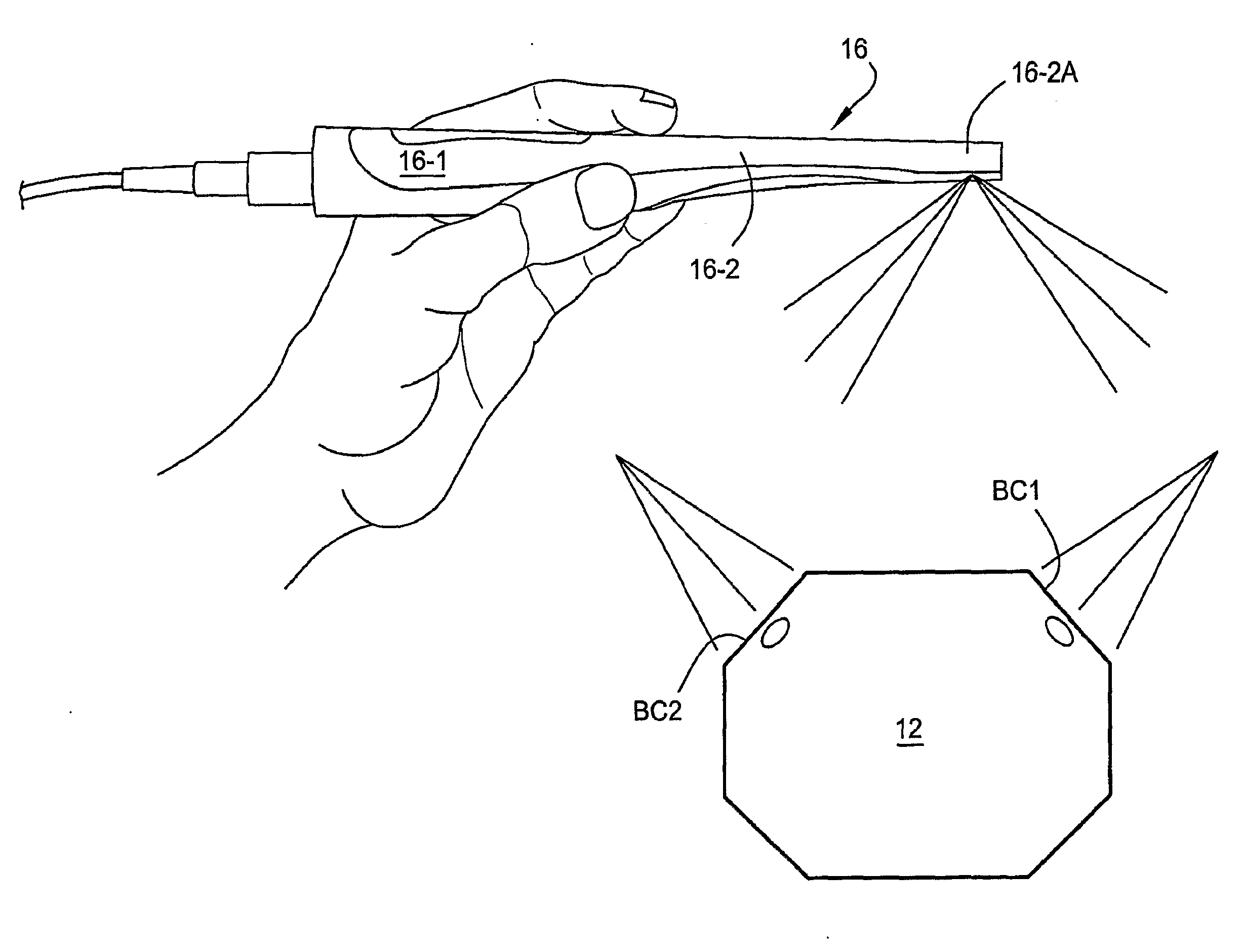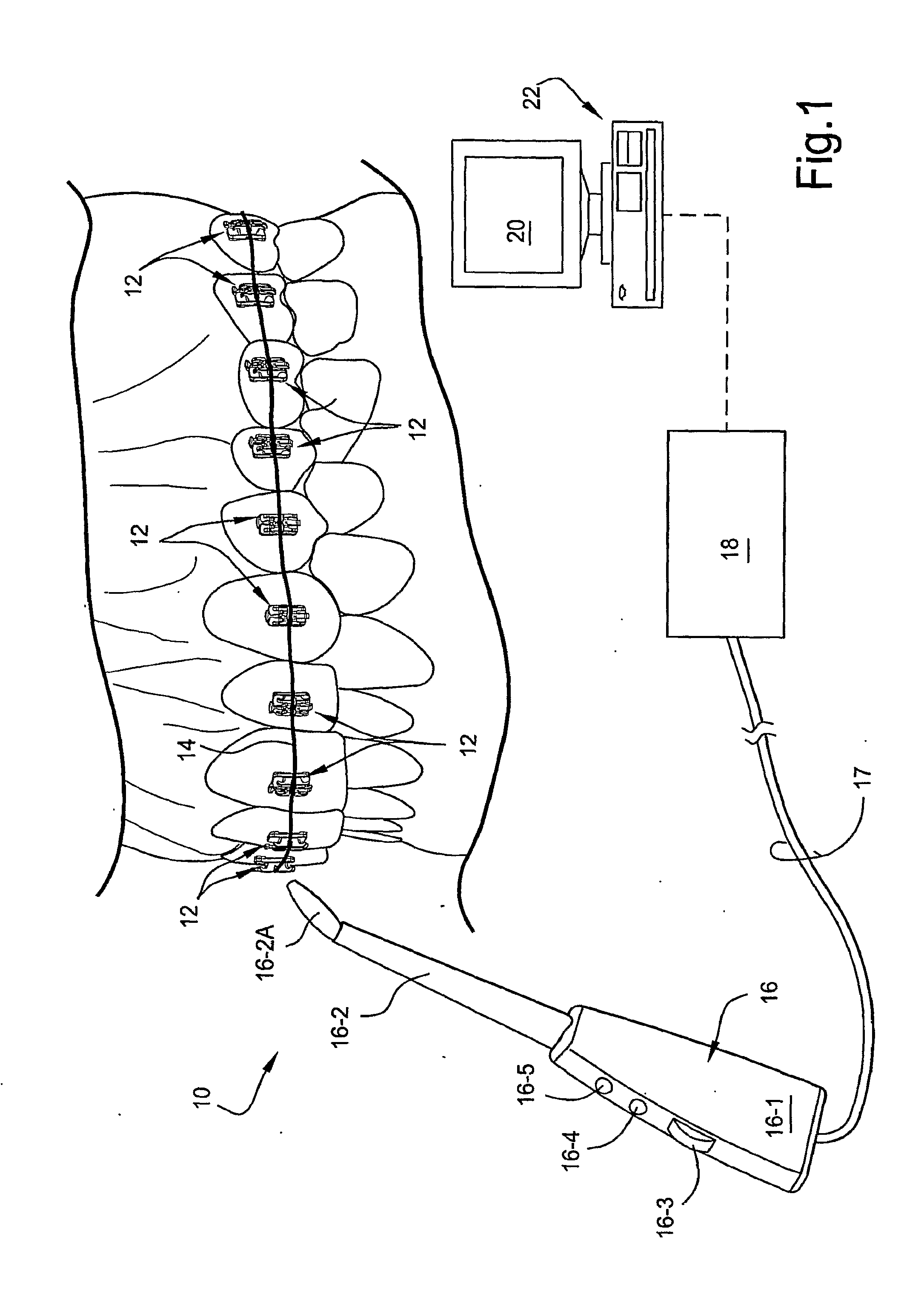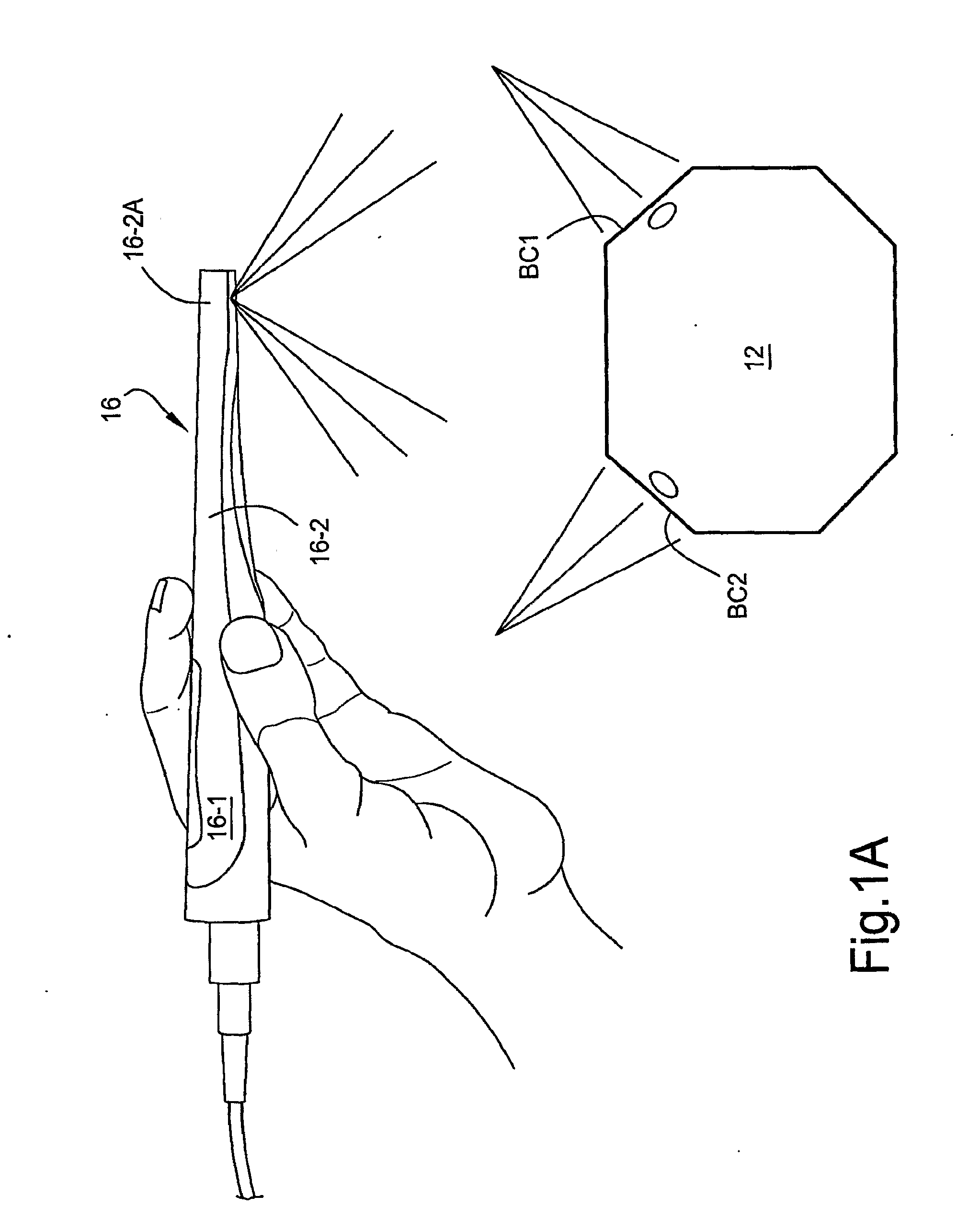Force-responsive orthodontic brackets and systems and methods which use the same
a technology of orthodontic brackets and force-responsive brackets, which is applied in the field of orthodontic brackets, can solve the problems of high subjective effort in the adjustment of the archwire, and achieve the effect of improving the stability and stability of the archwir
- Summary
- Abstract
- Description
- Claims
- Application Information
AI Technical Summary
Benefits of technology
Problems solved by technology
Method used
Image
Examples
Embodiment Construction
[0019]Accompanying FIG. 1 depicts schematically a system 10 according to the present invention which is especially adapted to detect and present the magnitude and / or direction of force associate with individual ones of the orthodontic brackets 12 which are bonded to the front surfaces of respective teeth in a patient's mouth. As will be explained in greater detail below, the individual brackets 12 are provided with fiducial markings that are indicative of the magnitude and / or direction of force applied to the brackets 12 by means of the archwire 14.
[0020]Generally, according to the present invention, the fiducial markings may be detected optically by means of a hand-held detector 16 which is connected operatively to a central processor 18 by signal line 17. The central processor 18 thus receives an output signal generated by means of the detector 16 via the signal line 17 and is programmed with the necessary algorithms which translate the output signal representative of the opticall...
PUM
 Login to View More
Login to View More Abstract
Description
Claims
Application Information
 Login to View More
Login to View More - R&D
- Intellectual Property
- Life Sciences
- Materials
- Tech Scout
- Unparalleled Data Quality
- Higher Quality Content
- 60% Fewer Hallucinations
Browse by: Latest US Patents, China's latest patents, Technical Efficacy Thesaurus, Application Domain, Technology Topic, Popular Technical Reports.
© 2025 PatSnap. All rights reserved.Legal|Privacy policy|Modern Slavery Act Transparency Statement|Sitemap|About US| Contact US: help@patsnap.com



